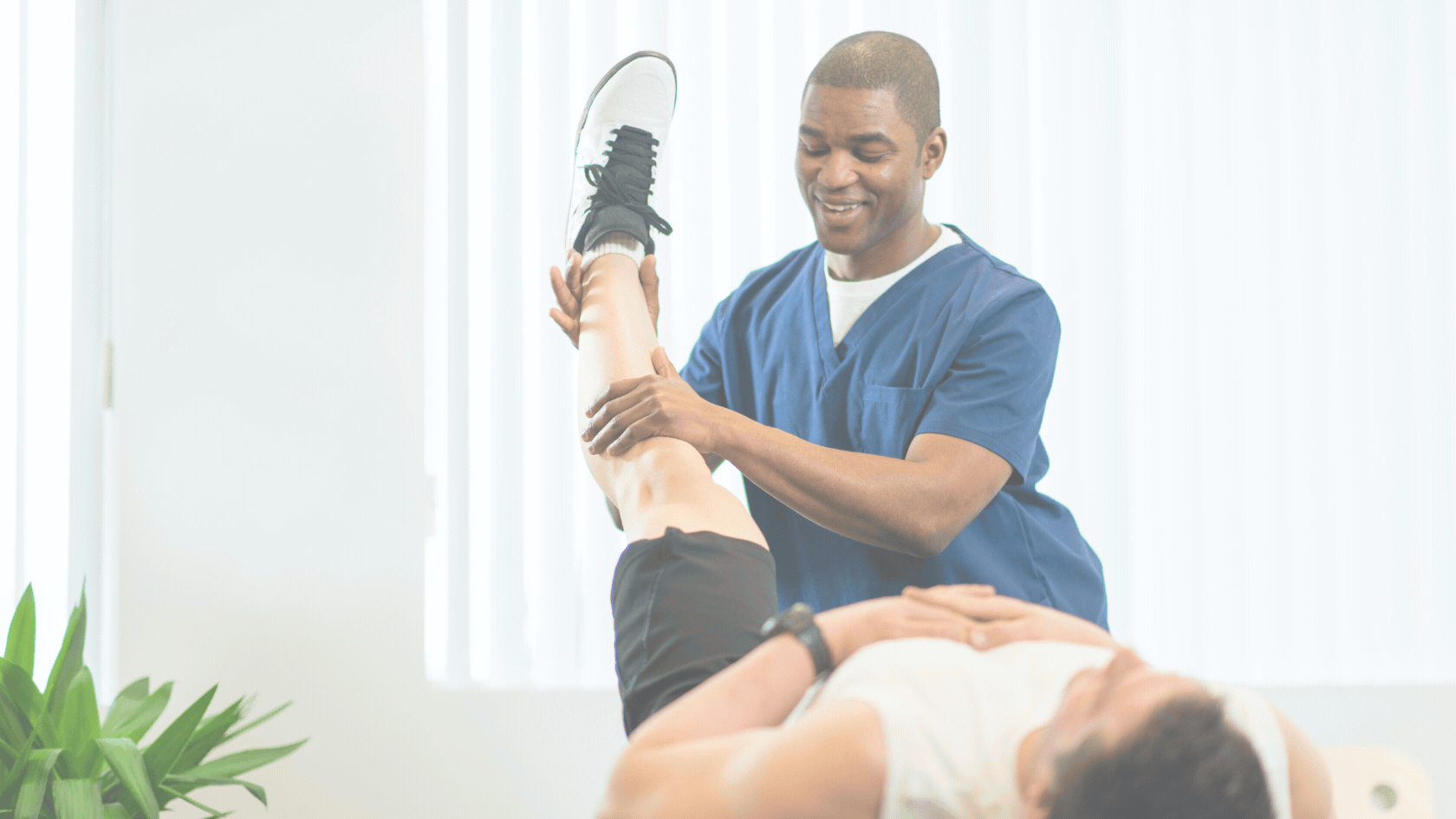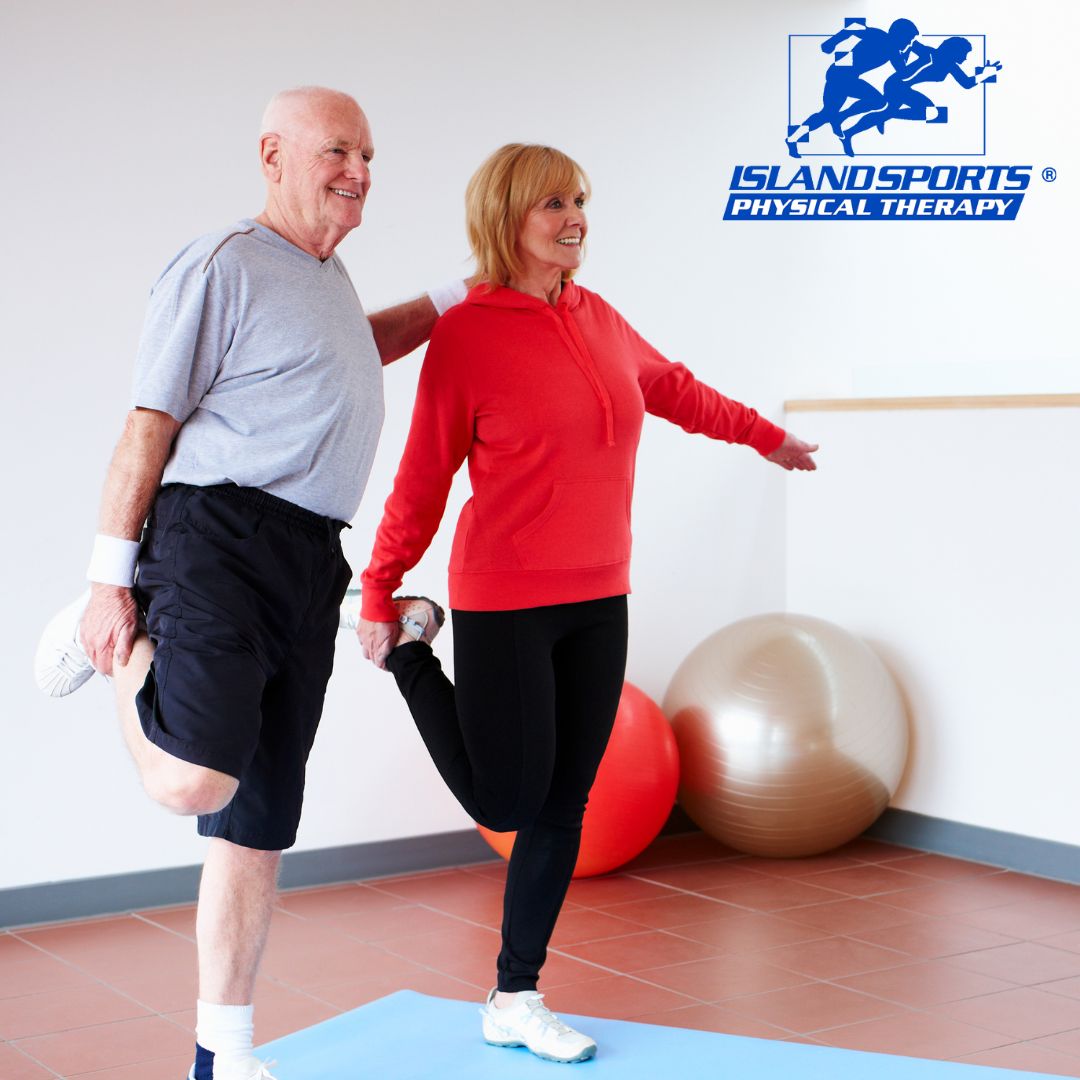
All About Soft Tissue Mobilization
Have you been feeling tightness and discomfort in your muscles? Does this stiffness limit your ability to move freely? If these issues sound familiar, you might benefit from soft tissue mobilization therapy. This technique treats various musculoskeletal problems, providing relief and improving mobility. At Island Sports Physical Therapy Long Island, our experienced physical therapist Nassau County is dedicated to helping patients recover and regain their functional abilities.
Understanding Soft Tissue Mobilization
Soft tissue mobilization is a form of manual therapy that targets the muscles, tendons, ligaments, and fascia. This technique involves the physical therapist using their hands to apply pressure and manipulate the soft tissues. The goal is to break down scar tissue, improve blood flow, and promote the healing of injured areas. This therapy is beneficial for treating conditions like muscle strains, ligament sprains, and chronic pain.
How Does Soft Tissue Mobilization Work?
During a soft tissue mobilization session, the physical therapist Nassau County will first assess the affected area to identify any restrictions or areas of tightness. Using their hands, they will apply pressure and perform various techniques, such as kneading, stretching, and friction. This hands-on approach helps to:
- Increase blood circulation to the area, which promotes healing.
- Reduce muscle tension and spasms.
- Break down adhesions and scar tissue.
- Improve range of motion and flexibility.
- Decrease pain and inflammation.
Soft tissue mobilization therapy is a targeted approach to breaking down scar tissue and realigning muscle fibers to allow for better function and less pain. This technique can be particularly effective for those who have not responded to other forms of treatment and can provide a significant improvement in mobility and pain relief.
Benefits of Soft Tissue Mobilization
There are numerous benefits to undergoing soft tissue mobilization therapy, especially when performed by a skilled physical therapist Nassau County. Some of the key benefits include:
- Pain Relief: By reducing muscle tension and breaking down scar tissue, soft tissue mobilization can significantly decrease pain levels, providing much-needed relief.
- Enhanced Mobility: Improved blood flow and reduced adhesions help to enhance your range of motion, making it easier to move without discomfort.
- Accelerated Healing: Increased circulation and reduced muscle tension promote faster healing of injured tissues.
- Prevention of Future Injuries: By addressing underlying issues and improving tissue health, soft tissue mobilization can help prevent future injuries and chronic pain.
Conditions Treated with Soft Tissue Mobilization
Soft tissue mobilization is effective in treating a variety of conditions, including:
- Muscle Strains and Sprains: These injuries can cause significant pain and limit your ability to perform daily activities. Soft tissue mobilization helps to speed up the healing process and restore function.
- Chronic Pain: Conditions like lower back pain, neck pain, and fibromyalgia can be managed with regular soft tissue mobilization sessions.
- Post-Surgical Recovery: After surgery, scar tissue can form and limit mobility. Soft tissue mobilization can break down this tissue and improve your recovery.
- Sports Injuries: Athletes often suffer from overuse injuries and muscle imbalances. Soft tissue mobilization can help address these issues and keep athletes performing at their best.
What to Expect During a Session
When you visit Island Sports Physical Therapy for a soft tissue mobilization session, our physical therapist Nassau County will start by assessing your condition and discussing your symptoms. They will then develop a personalized treatment plan tailored to your specific needs. The session will involve hands-on techniques to manipulate the soft tissues, and you may experience some mild discomfort as the therapist works on the affected areas. However, this discomfort is temporary and is a sign that the therapy is working.
Visit Us For Sports Physical Therapy Long Island
If you’re experiencing muscle tightness, pain, or restricted movement, soft tissue mobilization therapy may be the solution you need. At Island Sports Physical Therapy, our skilled physical therapists are committed to helping you achieve optimal health and wellness.
Common Vestibular Disorders: Symptoms and Treatment Options
Maintaining balance and coordination is essential for peak performance and everyday activities as an athlete or active individual. However, when the vestibular system, which controls balance, is compromised, it can lead to a range of disruptive symptoms. At Island Sports Physical Therapy, our team specializes in diagnosing and treating vestibular disorders. Understanding these conditions is the first step towards effective treatment and regaining your quality of life.
 What Are Vestibular Disorders?
What Are Vestibular Disorders?
Vestibular disorders affect the inner ear and brain, areas that help control balance and eye movements. Various factors, including infections, injuries, or degenerative conditions can cause these disorders. The vestibular system includes parts of the inner ear and brain that process the sensory information involved in controlling balance and eye movements. When these areas are damaged, you might experience dizziness, vertigo, balance issues, and other symptoms that impact your daily life.
Common Symptoms of Vestibular Disorders
The symptoms of vestibular disorders can vary widely but often include:
- Vertigo or the sensation of spinning.
- Dizziness or lightheadedness.
- Imbalance and unsteadiness.
- Nausea and vomiting.
- Difficulty concentrating.
- Hearing changes or tinnitus (ringing in the ears).
It’s important to pay attention to these symptoms, as they can affect your ability to perform daily tasks and participate in physical activities. If you experience these symptoms, seeking help from Huntington physical therapy can lead to effective management and relief.
Types of Vestibular Disorders
There are several common vestibular disorders that our physical therapists encounter:
- Benign Paroxysmal Positional Vertigo (BPPV): This condition occurs when tiny calcium crystals in the inner ear become dislodged and affect balance. BPPV is characterized by brief episodes of vertigo triggered by changes in head position.
- Vestibular Neuritis: An inflammation of the vestibular nerve, often caused by a viral infection, leading to severe vertigo, dizziness, and balance problems.
- Meniere’s Disease: A chronic condition that affects the inner ear, causing episodes of vertigo, hearing loss, tinnitus, and a feeling of fullness in the ear.
- Labyrinthitis: An infection or inflammation of the inner ear, resulting in vertigo, dizziness, and potential hearing loss.
- Persistent Postural-Perceptual Dizziness (PPPD): A condition characterized by chronic dizziness and unsteadiness, often triggered by visual stimuli or complex environments.
Recognizing the Signs
Being aware of the symptoms and types of vestibular disorders is crucial for early intervention. Vertigo, for instance, is often described as a spinning sensation, even when you’re standing still. This can be alarming and disorienting, making it difficult to perform everyday activities. Other symptoms like dizziness, imbalance, and difficulty focusing can also significantly impact your life.
Treatment Options at Huntington Physical Therapy
At Island Sports Physical Therapy, we offer specialized treatment options tailored to each patient’s unique needs. Our Huntington physical therapy team is well-versed in various techniques to address vestibular disorders, ensuring you receive comprehensive care. Some of the treatment methods include:
- Vestibular Rehabilitation Therapy (VRT): A customized exercise-based program designed to improve balance and reduce dizziness-related problems. VRT helps your brain adapt to and compensate for the inner ear signals.
- Canalith Repositioning Maneuvers: Specifically for BPPV, these maneuvers help move the dislodged calcium crystals to a part of the ear where they won’t cause vertigo.
- Balance Training: Exercises that focus on improving your balance, coordination, and stability. This is especially beneficial for those who experience frequent falls or unsteadiness.
- Education and Lifestyle Modifications: Learning about your condition and making lifestyle changes can significantly impact your recovery. Our therapists provide guidance on activities to avoid and strategies to manage symptoms.
Seeking Help
If you’re experiencing symptoms of a vestibular disorder, it’s crucial not to ignore them. Early intervention can prevent the condition from worsening and help you regain control over your life. At Island Sports Physical Therapy, our Huntington physical therapy team is dedicated to providing you with the best care possible. We use advanced techniques and personalized treatment plans to address your needs and help you achieve optimal balance and function.
Contact Us – Sports Physical Therapy Long Island
Vestibular disorders can be disruptive, but with the right treatment and support, you can manage your symptoms effectively. At Island Sports Physical Therapy Long Island, our specialists are here to guide you through your recovery journey.
Visit Us For Sports Physical Therapy Long Island
What Is Sports Specific Exercise?
In the world of fitness and athletic training, sports-specific exercise and physical therapy is crucial for those aiming to enhance their performance in a particular sport. This type of training goes beyond general fitness routines, focusing instead on movements and skills that mimic the actions of a specific sport. By incorporating exercises that replicate the physical demands of a sport, athletes can improve their performance, reduce the risk of injury, and ensure their bodies are finely tuned for their chosen discipline.
Understanding Sports-Specific Exercise
Sports-specific exercise refers to a training regimen tailored to meet the physical requirements of a particular sport. Unlike general fitness programs, which aim to improve overall health and fitness, sports-specific exercises are designed to enhance the skills, strength, endurance, and flexibility needed for optimal performance in a specific athletic activity.
Benefits of Sports-Specific Exercise
- Enhanced Performance—One of the primary benefits of sports-specific exercise is the enhancement of performance. By focusing on exercises that mimic the movements and skills required in a sport, athletes can improve their efficiency, speed, and agility. This specialized training helps refine techniques and boost overall athletic performance.
- Injury Prevention – Sports-specific exercises play a critical role in injury prevention. By strengthening the muscles and joints used in a particular sport, athletes can reduce the risk of joint injuries associated with that sport. This type of training helps in improving balance, coordination, and stability, which are essential for avoiding injuries.
- Tailored Training Programs – Each sport requires a unique set of skills and physical attributes. Sports-specific training allows for the creation of customized programs that address the specific needs of an athlete. Whether it’s enhancing the explosive power of sprinters or improving the endurance of long-distance runners, sports-specific exercises cater to the individual demands of each sport.
Components of Sports Specific Exercise
- Skill Development – Skill development is a crucial component of sports specific exercise. This involves practicing and refining the specific techniques and movements required in a sport. For example, a basketball player might focus on shooting drills, dribbling exercises, and defensive maneuvers.
- Strength Training – Strength training is essential for building the muscle power necessary for peak performance. Sports specific strength training involves exercises that target the muscle groups used most frequently in a sport. For instance, a swimmer would focus on upper body strength, while a soccer player might concentrate on leg strength. We offer physical therapy Riverhead to help patients achieve better strength for their sport.
- Cardiovascular Conditioning – Cardiovascular conditioning is vital for maintaining the stamina needed to perform at high levels for extended periods. Sports specific cardiovascular training includes activities that simulate the intensity and duration of the sport. Runners might engage in interval training, while basketball players might perform high-intensity drills.
- Flexibility and Mobility – Flexibility and mobility are important for preventing injuries and enhancing performance. Sports specific flexibility training involves stretching and mobility exercises that target the joints and muscles used in a sport. Gymnasts, for example, would focus on exercises that enhance their flexibility and range of motion.
Examples of Sports Specific Exercises
- Basketball – For basketball players, sports specific exercises include agility drills, plyometric exercises, and shooting practice. Agility drills, such as ladder drills and cone drills, help in improving footwork and quickness. Plyometric exercises, like box jumps and medicine ball throws, enhance explosive power.
- Soccer – Soccer players benefit from exercises that improve their endurance, agility, and strength. Sprint intervals, agility ladder drills, and resistance band exercises are commonly used. These exercises help in developing the speed and stamina needed for continuous play and the strength required for kicking and tackling.
- Swimming – Swimming-specific exercises focus on enhancing upper body strength, core stability, and cardiovascular endurance. Swimmers often engage in dryland training, which includes exercises like pull-ups, planks, and interval training. These exercises help in building the strength and endurance needed for powerful strokes and sustained performance in the water.
- Tennis – Tennis players need exercises that improve their agility, strength, and hand-eye coordination. Lateral movement drills, resistance band exercises, and reaction drills are effective. These exercises help in enhancing the quick lateral movements and the power behind serves and strokes. Learn more about these exercises with physical therapy.
Designing a Sports Specific Exercise Program
- Assessment and Goal Setting – The first step in designing a sports specific exercise program is assessing the athlete’s current fitness level and identifying their goals. This involves understanding the physical demands of the sport and the areas where the athlete needs improvement.
- Tailored Exercise Selection – Based on the assessment, a tailored exercise program is developed. This program includes exercises that target the specific skills and physical attributes needed for the sport. The selection of exercises should consider the athlete’s strengths and weaknesses.
- Periodization – Periodization involves structuring the training program into different phases, each with a specific focus. This helps in preventing overtraining and ensures steady progress. For example, a training program might include phases for building endurance, increasing strength, and enhancing speed and agility.
- Monitoring and Adjustment – Regular monitoring of the athlete’s progress is crucial. This involves tracking performance metrics and making necessary adjustments to the training program. Continuous feedback helps in fine-tuning the exercises and ensuring the athlete remains on track to achieve their goals.
Contact Us for Sports Physical Therapy Long Island
Incorporating sports specific exercises into an athlete’s training regimen is essential for optimizing performance and preventing injuries. By focusing on the skills, strength, endurance, and flexibility required for a specific sport, athletes can achieve their peak performance levels. Whether it’s basketball, soccer, swimming, or tennis, sports specific training provides a tailored approach that addresses the unique demands of each sport. Contact Island Sports Physical Therapy today to learn more about our sports physical therapy Long Island!


